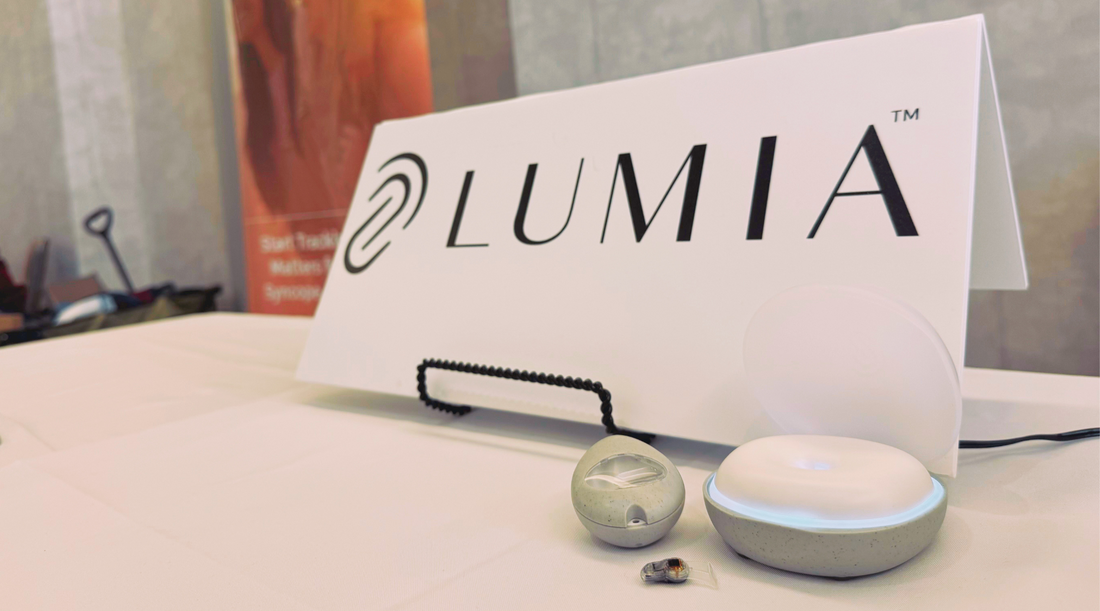
Research Update: Lumia Device Correlates with Dysautonomia Symptoms Better Than Heart Rate
Share
In an exciting research update shared last weekend at the Dysautonomia International 12th Annual Conference, data from Lumia wearable devices was shown to correlate with dysautonomia symptoms more than traditional heart rate or blood pressure. 
The original research -- conducted at the prior year's Dysautonomia International conference -- included stand test data on 20 individuals diagnosed with one or more autonomic nervous system disorders, as well as 10 healthy controls.
Participants were tested in their everyday state, which meant that most were on one or more interventions to treat their conditions. Those interventions included medications, graduated compression garments, and increased sodium intake.
Heart rate was stable during stand testing in the diagnosed participants, even though 90% had POTS. This is likely due to their treatments. Despite normal heart rates, participants still reported symptoms, and Lumia measured drops in blood flow to their heads.
In this study, data showed that Lumia eCBF discriminates between patients with dysautonomia and healthy controls better than either changes in heart rate or blood pressure can. These data underscore the usefulness of the Lumia device for in-ear blood flow monitoring as an objective measurement of dysautonomia symptoms.
Dr. Amanda Miller -- who was honored at the conference with multiple awards and accolades including the Sparkle Award -- shared the compelling new findings at a poster session alongside Lumia Health Co-founder Daniel Ewok Lee.
Conference attendees voted to grant the Patient's Choice award to the research.
 Dr. Amanda Miller (left) and Lumia Co-founder Daniel Ewok Lee (right) share the findings at a poster session. Photo courtesy of Dysautonomia International.
Dr. Amanda Miller (left) and Lumia Co-founder Daniel Ewok Lee (right) share the findings at a poster session. Photo courtesy of Dysautonomia International.
On the last day of the conference, the Lumia Health team shared a Research Update panel session titled: "Tech Innovations in Dysautonomia Care: Tracking Blood Flow to the Head with an In-Ear Wearable.
During the session, Dr. Miller shared the stand test data described above, as well as comparisons of Lumia data with Trans-Cranial Doppler (TCD) ultrasound. Daniel Ewok Lee discussed the technology for how the Lumia wearable device works. Lastly, I shared several snippets from my own Lumia data. My slides featured graphs showing how my body responds to Stand Testing, sugar, extended upright time while shopping, a passive leg raise posture -- intended to restore blood flow to the head -- and the effects of my medication, Northera.
Currently, the Lumia wearable is not a medical device and cannot be used to diagnose or treat any condition. Even so, daily use of this new tracker for POTS and Dysautonomia can be useful for people like myself to better self-manage our complex conditions.
![]()
The Dysautonomia International conference continues to be the world's largest conference on autonomic disorders. The event brings together patients, caregivers, researchers, physicians, industry representatives, non-profit leaders and government policy makers to share information on the latest research on autonomic disorders, diagnostic techniques, pharmacological and non-pharmacological treatment approaches, information on related medical conditions, advocacy training, and social activities.
The Lumia Health team was honored to be a sponsor and exhibitor, as well as share the latest information with our community. Attendees also had a chance to get hands-on with the latest Lumia device hardware components. Available for viewing were the "final materials" versions of the Lumia in-ear wearable device, the Light Station which both charges and syncs the device, and the convenient carry case.
We loved the opportunity to connect and share with our community and answer your questions!